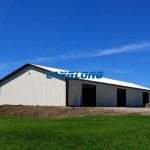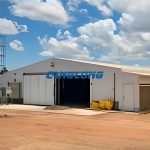What types of metal buildings are there in Australia?
Metal architecture, as an important component of modern architecture, has been widely used worldwide due to its unique material properties and diverse design styles. These buildings not only showcase the power of technology, but also integrate aesthetic, cultural, and environmental considerations, becoming a beautiful landscape in the urban landscape. The following is an overview of several main types of metal buildings:
1. Light steel structure building
Light steel structure buildings are a large category of metal buildings, characterized by the use of lightweight and high-strength steel as the main load-bearing structure. This type of building is commonly found in low rise residential buildings, villas, office buildings, and commercial facilities. The advantages of light steel structure buildings lie in their fast construction speed, good seismic performance, ease of industrial production and on-site assembly, and recyclable materials, which conform to the concept of green buildings. In Australia, light steel structure buildings are particularly popular, especially in the residential sector, and their mature technology and design concepts provide local residents with a safe and comfortable living environment.

2. Metal curtain wall buildings
Metal curtain wall architecture refers to a building form that uses metal sheets (such as aluminum plates, stainless steel plates, titanium zinc plates, etc.) as the exterior facade of the building. This type of building forms a unique visual effect and texture through special processing and installation techniques of metal sheets, with strong modernity, good weather resistance, and easy maintenance. Metal curtain walls can not only serve as decorative surfaces for buildings, but also be closely integrated with the structural system of buildings, improving the overall performance and aesthetics of the building. In Australia, many landmark buildings and high-end commercial complexes have adopted metal curtain wall designs, becoming highlights in the city skyline.

3. Metal roofs and wall buildings
Metal roof and wall construction refers to the use of metal sheets as building roofs and walls. These types of buildings typically have excellent waterproof, fireproof, thermal insulation, and sound insulation performance, as well as long service life and low maintenance costs. In Australia, due to the variable climate, metal roofs and wall buildings play an important role in protecting the internal environment of buildings. In addition, the diversity and processability of metal sheets provide architects with a wide range of design choices, making the appearance of buildings more colorful.

4. Industrial plant and warehouse buildings
Industrial plants and warehouse buildings are one of the important application areas of metal construction. This type of building is usually composed of steel structural frames and metal roof and wall panels, which have the characteristics of structural stability, strong bearing capacity, and high space utilization. In Australia, with the continuous development of manufacturing and logistics industries, the demand for industrial plants and warehouse buildings is constantly increasing. Metal buildings meet these needs with their unique advantages and have become an indispensable part of the industrial sector.

5. Public art and sculpture architecture
Metal architecture is often combined with public art and sculpture to create architectural works with unique charm and cultural connotations. In Australia, public art and sculpture buildings primarily made of metal can be seen in some city squares, parks, and community centers. These works not only beautify the urban environment, but also enrich the cultural life of citizens, becoming an important part of urban culture.
Metal buildings have been widely used worldwide due to their diverse types and unique charm. From light steel structure buildings to metal curtain wall buildings, from industrial plants and warehouse buildings to public art and sculpture buildings, metal buildings continue to drive the development and innovation of the construction industry with their unique material characteristics and design concepts. In the future, with the continuous advancement of technology and people’s pursuit of a better life, metal buildings will show broader development prospects and infinite possibilities.











